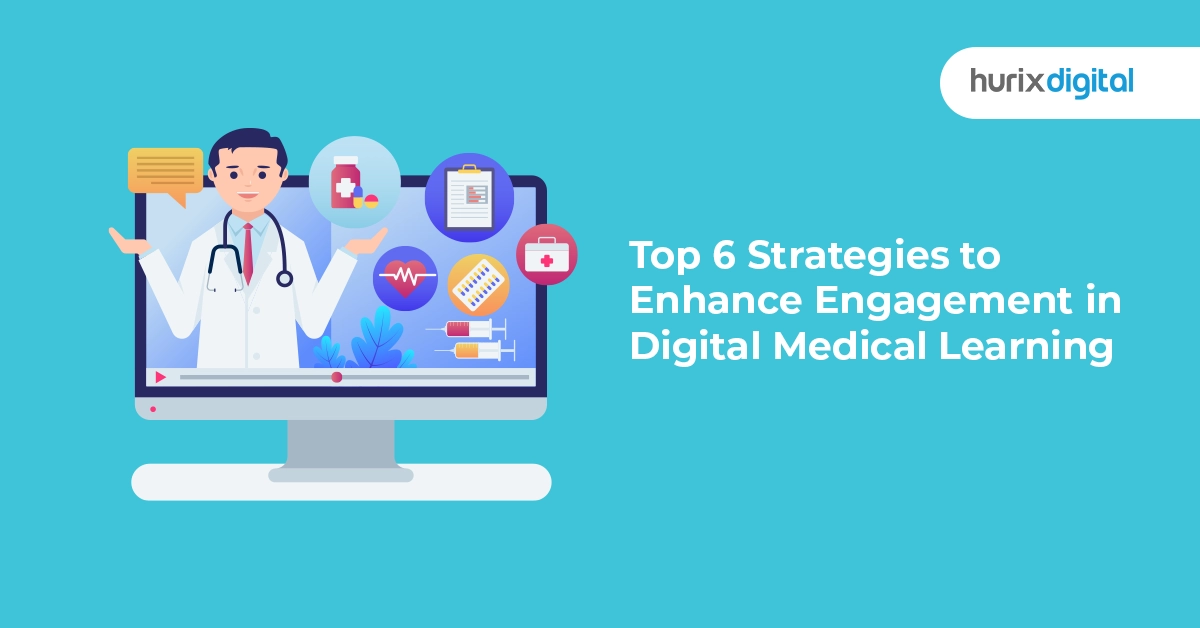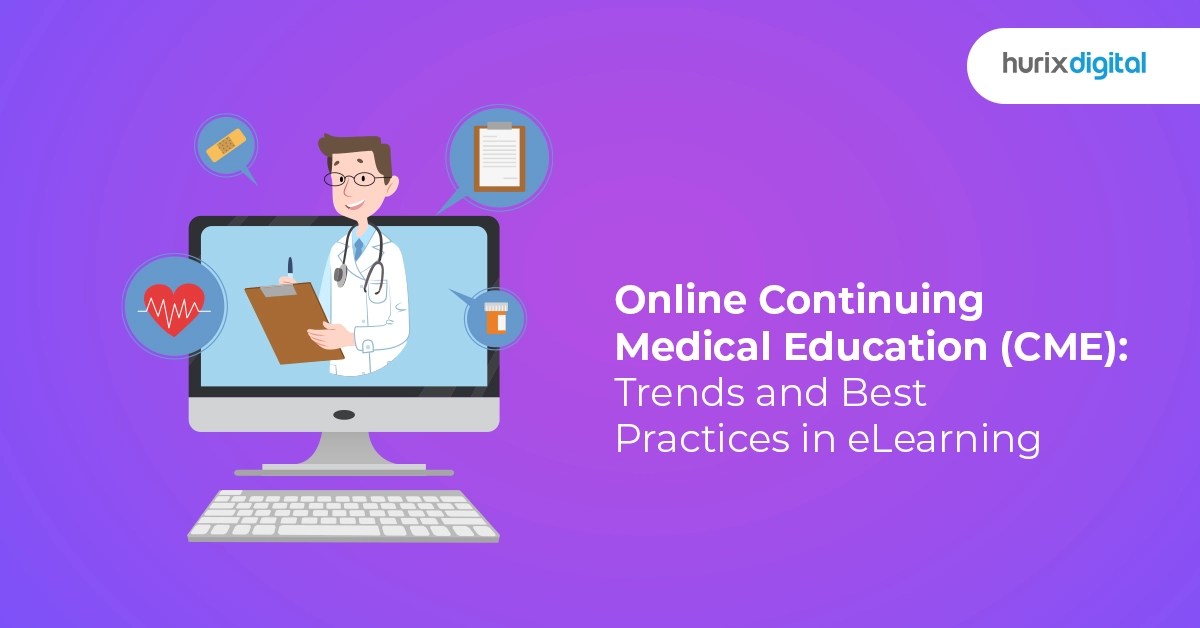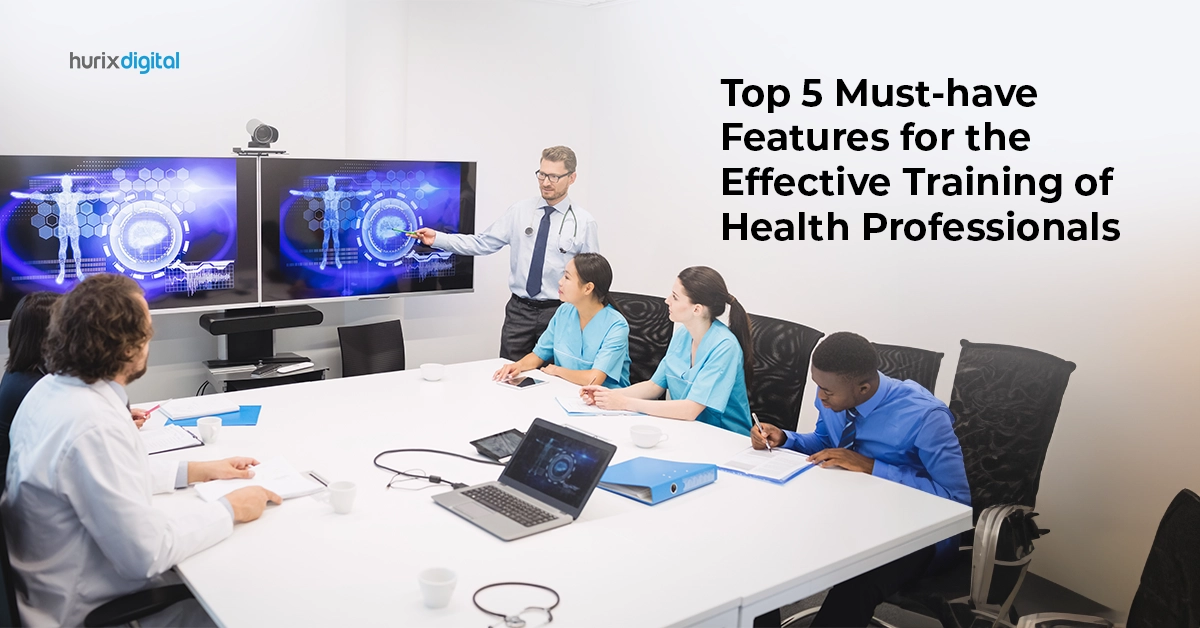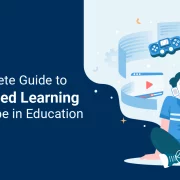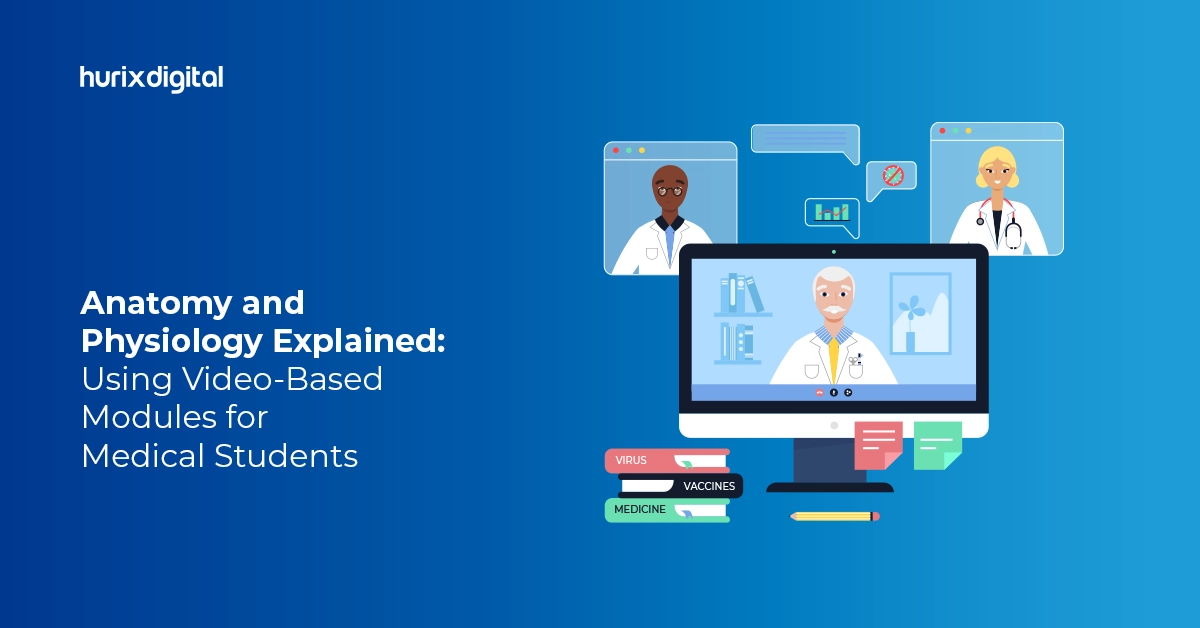
Anatomy and Physiology Explained: Using Video-Based Modules for Medical Students
Summary
Discover how video-based modules can simplify complex anatomy and physiology concepts for medical students. This article highlights the benefits of multimedia learning.
The educational industry is evolving rapidly, and the use of video-based learning is on the buzz, revolutionizing traditional teaching methods. It has significantly increased students’ engagement and comprehension through interactive modules that offer fresh perspectives on complex topics like anatomy and physiology.
In the higher education department, particularly in the field of medical studies, the integration of innovative teaching methods is paramount to ensure effective learning outcomes.
Video-based modules allow you to witness the wonders of the human body come to life through the immersive experience. By embracing this innovative approach, educators can not only enhance the educational journey of their students but also pave the way for a more interactive and engaging learning experience.
In this blog, we will explore the advantages, challenges, and impact of video-based learning in medical education.
Table of Contents:
- The Evolution of Teaching with Video-Based Learning
- The Power of Visual Learning in Anatomy and Physiology
- Advantages of Video-Based Learning in Medical Education
- Integrating Video-Based Modules into Medical Curriculum
- Overcoming Challenges and Maximizing Impact
- Conclusion
The Evolution of Teaching with Video-Based Learning
Video-based learning has transformed traditional teaching methods, offering students a more engaging and interactive educational experience.
A study reveals that learners choose video-based content 2.5 times more than the conventional text style. This shift highlights the growing importance of visual media in education.
- Engagement Through Dynamic Learning: Video-based learning promotes active participation and engagement among students, moving away from passive lectures to dynamic educational experiences. Research states that 94% say video content increases student satisfaction and improves student performance.
- Transformation of Educational Landscape: The introduction of video-based learning has revolutionized how students interact with complex subjects like anatomy and physiology, providing a more immersive and dynamic approach to learning. Through videos, intricate concepts are brought to life, facilitating a deeper understanding of theoretical principles and practical applications in medical education.
- Enhanced Understanding: Incorporating video-based modules enhances students’ understanding of intricate topics by visually representing theoretical concepts, making learning more accessible and engaging. This visual approach not only aids in knowledge retention but also promotes a deeper understanding of complex subject matter in higher education.
The Power of Visual Learning in Anatomy and Physiology
Visual learning is a powerful tool in the intricate fields of Anatomy and Physiology, offering students a more intuitive understanding of complex biological processes. Through its engaging and interactive nature, visual learning significantly enhances students’ grasp of anatomical and physiological concepts, making the intricate details of the human body more accessible and engaging.
- Visual Learning as a Powerful Tool: Visual representations resonate deeply with students, allowing for a more transparent and more intuitive grasp of complex anatomical and physiological concepts.
- Interactive Experience: Through video-based modules, students can engage with visually stimulating content that brings the wonders of the human body to life, fostering a deeper connection to the subject matter.
- Enhanced Engagement: The use of visual aids not only makes learning fun but also caters to different learning styles, enhancing engagement and interest in Anatomy and Physiology.
Also Read: How to Hire the Best Healthcare Instructional Designer for Your Training Needs?
Advantages of Video-Based Learning in Medical Education
Video-based learning in Medical Education offers numerous benefits, from improved retention rates to enhanced comprehension of complex medical concepts, thereby enriching the learning experience for students in higher education.
- Improved Retention Rates: Video-based learning aids in memory recall by providing visual cues that enhance long-term retention of information. Studies say that video content has the potential to increase the retention rate by 60%.
- Enhanced Comprehension: Interactive video modules facilitate a better understanding of intricate medical topics, enabling students to grasp complex concepts with greater ease. This approach cultivates a deeper understanding of challenging subjects, empowering learners to grasp medical principles more effectively.
- Blend of Entertainment and Education: Video-based learning keeps students engaged while deepening their understanding of medical principles by combining entertainment elements with educational content.
- Increased Accessibility: Video-based learning can cater to diverse learning styles and preferences, making educational content more accessible to a wider range of students. It serves the individualized needs of students, allowing them to learn at their own pace and revisit challenging topics as needed.
- Real-world Application: By incorporating real-life case studies and simulations, video-based learning helps students apply theoretical knowledge to practical scenarios, enhancing their critical thinking and problem-solving skills.
Integrating Video-Based Modules into Medical Curriculum
Integrating video-based modules into the medical curriculum revolutionizes the learning experience, offering a dynamic and engaging platform for students in Higher Education.
- Enhanced Practical Skills: Video-based modules can simulate real-world scenarios, allowing students to develop practical skills and apply theoretical knowledge in clinical settings.
- Global Collaboration: Utilizing video-based platforms enables students to collaborate with peers and experts worldwide, nurturing a diverse and enriching learning environment.
- Adaptive Learning Paths: Implementing personalized learning paths within video-based modules can cater to individual student needs, promoting self-directed learning and mastery of content.
- Data-Driven Insights: Analyzing student engagement data from video-based modules can provide valuable insights for educators, allowing them to customize content and interventions effectively.
Overcoming Challenges and Maximizing Impact
While video-based learning offers significant benefits, implementation challenges can be overcome with strategic planning and support, ensuring a seamless and effective learning experience for students.
- Accessibility Considerations: Ensuring video-based content is accessible to all students, including those with disabilities, promotes inclusivity and equal educational opportunities.
- Community Engagement: Engaging with the broader educational community to share best practices and resources for video-based learning can enhance collaboration and innovation.
- Professional Development: Providing opportunities for educators to enhance their digital literacy skills and pedagogical knowledge by using video-based tools can optimize teaching effectiveness. Due to this, 81% of learning professionals plan to use new video content techniques.
- Peer Learning Networks: Establishing peer learning networks where students can share insights and support each other in navigating video-based content enables a collaborative learning environment.
Also Read: Innovative Education Solutions the Healthcare Industry Can Make Use of in 2024
Conclusion
The use of video-based learning in anatomy and physiology is explained as a transformative approach that revolutionizes medical education in higher Education. By harnessing the power of visual learning, educators can inspire and empower students to excel in their academic pursuits.
But how do you seamlessly achieve this? Hurix Digital can be your partner; through our expertise in eLearning content solutions and digital platforms, we can enhance the learning experience in this critical area. Our innovative approach to digital content creation can make learning more engaging, accessible, and interactive for medical students pursuing studies in Anatomy and Physiology.
By embracing the future of education with video-based modules, you can unlock a world of endless possibilities.
Contact us to know more!

Senior Vice President – Business Development
Over 25 years of experience in the edtech and workforce learning industry with strong skills in Business Development, Customer Relationship Management (CRM) and Strategy.
